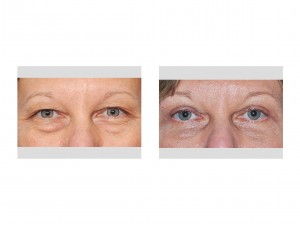The eyelids are very thin tissues that are well known to swell and bruise easily. Because one’s eyes are so visible, every upper eyelid surgery patient would like their bruising and swelling to go away as soon as possible. For this reason, it is standard practice to do several after surgery strategies including cold compresses, head elevation and the oral intake of Arnica. While no one after surgery strategy is known to be universally effective, it is commonly believed that cooling or cold would be the most important.
The use of eye cooling has led to a wide variety of gel compresses for the eyes for blepharoplasty patients. Most are composed of a gel material that retains cold for a period of time after being removed from the refrigerator or freezer. The historic cooling regime was frozen vegetables (such as peas or corn) but gel pads are lighter and easier to use
In the February 2015 issue of the journal Plastic and Reconstructive Surgery, a paper entitled ‘The Effect of Eyelid Cooling on Pain, Edema, Erythema, and Hematoma after Upper Blepharoplasty: A Randomized, Controlled, Observer-Blinded Evaluation Study’ was published. In 38 consecutive patients who had upper blepharoplasties performed, one side was cooled with an ice pack and the other eyelid was left uncooled. Evaluations were done on the degree of pain, edema, erythema, and occurrence of hematoma one hour, one day, one week, and two months after surgery. Light photography was used one week after surgery to determine the degree of bruising.
The results showed showed no difference in pain between the cooled and uncooled eyelids on the day of surgery. Pain in the cooled eyelids was significantly lower one day after surgery. No differences were seen in swelling, bruising or occurrence of hematoma between the cooled and uncooled eyelids at any time point in the study. The authors conclude that because the majority of patients had no preference for cooling over noncooling, eyelid cooling after upper blepharoplasty is not necessary.

Dr. Barry Eppley
Indianapolis, Indiana


